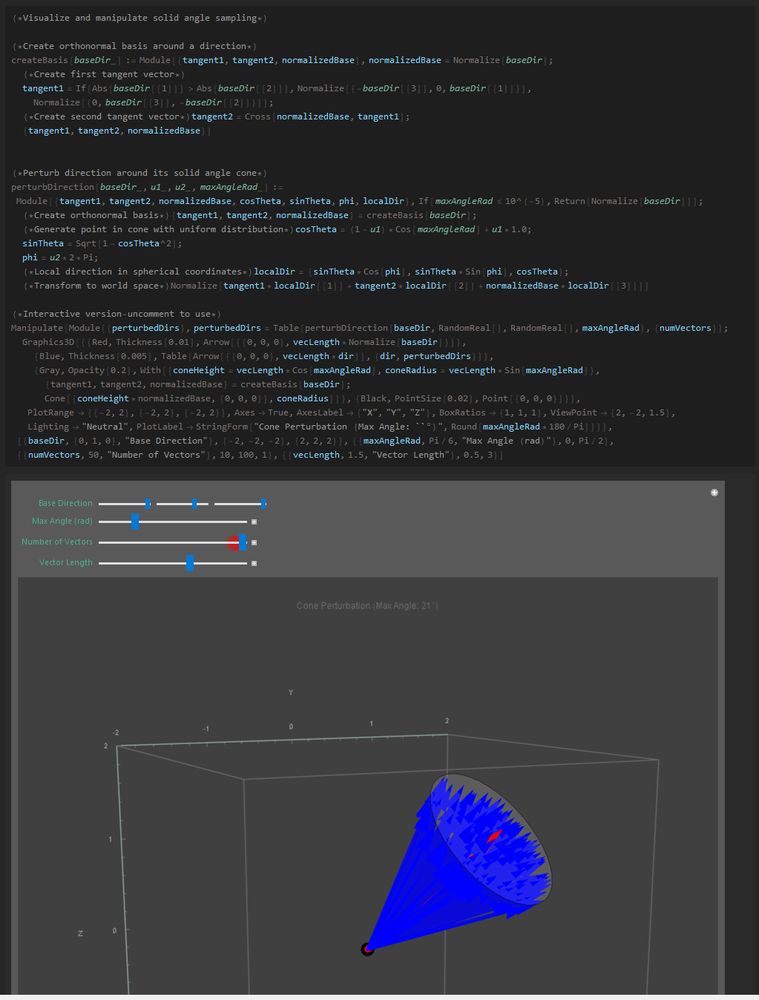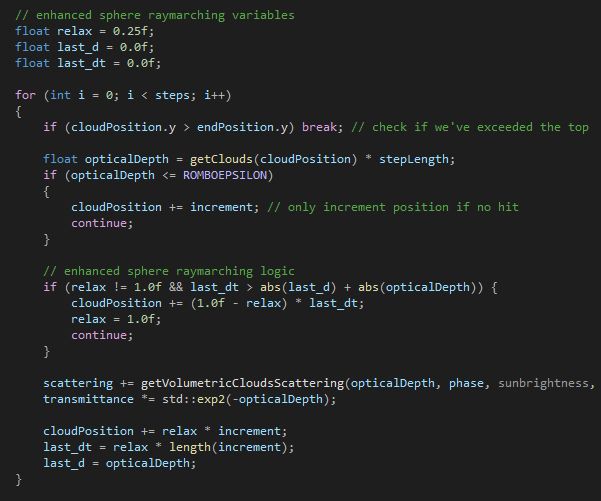I think it's more about culture, complexity, design, willing, and feasibility. Latest Unity looks like it goes well with Belcour's layered approach as I just have been told.
21.11.2025 22:29 — 👍 2 🔁 0 💬 1 📌 0
How cool.
21.11.2025 22:23 — 👍 0 🔁 0 💬 0 📌 0
Layered - Google Drive
No commercial renderer implements true layering .. do you ?
There are many models :
drive.google.com/drive/folder...
Video is using a plain blend op :
Final = Base * (1 - Blend1) + Coat1 * Blend1 * (1 - Blend2) + Coat2 * Blend2 ...
Let's add a 'fresnel map' and call it phys based ! ;)
21.11.2025 22:01 — 👍 0 🔁 0 💬 2 📌 0
Let's put it in this way.. there three kind of fools.. those that use a casual map, those that believe that multi-layer approaches takes into account interfaces(as a real scattering event) and eventually those that don't get anything of the above and use ai to tweet their nonsense 😁
21.11.2025 19:19 — 👍 0 🔁 0 💬 1 📌 0
Which in turn .. changes the optical path roughness .. ie. the aggregate scattering of the light ray entering and leaving the (dual) lobe. The video is pretentious at least. You can't compare a 'casual' map application to a dedicated multi-layer approach.
21.11.2025 12:04 — 👍 4 🔁 0 💬 1 📌 0

Patterns from : ' Mathematical Modeling of a Class of Symmetrical Islamic Design'.
Proper coloring is almost impossible because stars in a periodic tiling where cell boundaries wrap destroy the pattern topology .. ie. a ray can hit edges that are topologically behind the starting point ! 🤔
18.11.2025 20:23 — 👍 2 🔁 0 💬 0 📌 0
Working with floats in C/C++? Fncs like fmod(), fmin(), fabs() etc. actually use doubles internally (floats get promoted on call). For better performance with float data, use the 'f' suffix versions: sinf(), sqrtf() are obvious, fmodf(), fminf() less so. Easy to overlook, but matters in tight loops!
23.10.2025 20:44 — 👍 7 🔁 0 💬 0 📌 0

Paint By Numbers: Abstract Image Representations
t.co/nPXURJpFUB
21.07.2025 18:11 — 👍 7 🔁 1 💬 0 📌 0

Finally had some luck implementing rt multiscale glints (zirr/kaplaian2018) offline ! Snow uses delta-Eddington phase fnc.
09.07.2025 18:31 — 👍 9 🔁 0 💬 0 📌 0
I think I'm still using the original Frisvad one.. can't remember if on purpose or just because of laziness in redoing all unit tests! Either ways thanks for the reference! 🤟🤓
09.07.2025 18:19 — 👍 1 🔁 0 💬 1 📌 0

Solid angle sampling : uniformly perturb a base vector within its solid angle cone.
github.com/RomboDev/Mis...
09.07.2025 14:07 — 👍 4 🔁 0 💬 0 📌 0


Importance sampled sky mapping.
14.03.2025 21:31 — 👍 7 🔁 0 💬 1 📌 0


Phased moon 3D directional blur.
07.03.2025 22:22 — 👍 14 🔁 0 💬 0 📌 0
Oh ehy 🤟 thanks! That's mostly fbm iterations over fast perlin noise.
07.03.2025 19:57 — 👍 1 🔁 0 💬 0 📌 0

Btw, we locate sun in the sky by checking ray dir alignment with sun center (cosTheta>sunCosTheta) .. so we don't generally consider sun size. However, sin() of sun angular diameter is sun radius (!) and we can use that at horizon to account for sun having a real diameter ie. for twilight zone etc.
01.03.2025 17:16 — 👍 8 🔁 0 💬 1 📌 0


Modular approach to sky modeling 🔭🚀🌙
23.02.2025 21:03 — 👍 6 🔁 0 💬 0 📌 0
Cool ! Do you add them simply together or are you using importance sampling or some heuristics to layer them ?
30.12.2024 20:51 — 👍 1 🔁 0 💬 1 📌 0


If you want to be physically correct instead to use ie. a smoothstep fnc to fade out for example stars at horizon you can use this analytical approximation to the atmospheric extinction coefficent :
30.12.2024 20:43 — 👍 16 🔁 1 💬 1 📌 0
The localPoint in the previous code is also the hit normal so I had just to add bump mapping, a dot product (moonnormal,sundir) for diffuse wrapped in a ^0.75 to compress the shadow terminator and eventually a bit of ambient (+albedo*0.075).. and voilà a basic moon with tidal locking.
14.12.2024 21:28 — 👍 4 🔁 0 💬 0 📌 0


Simulate moon tidal locking by actually locking UVs to the view direction 🌙⛓️
13.12.2024 21:26 — 👍 5 🔁 0 💬 0 📌 0

I'm keeping updated this super comprehensive collection of <Light Transport> papers (by tech and by year), from the Kajiya eq to latest differential and neural approaches, passing by RRT and MC theories | As before, repost if you think it may be useful to others.
drive.google.com/drive/folder...
21.11.2024 21:38 — 👍 88 🔁 25 💬 1 📌 0
Sry but I keep seeing your artworks and every time I think.. your drawings to me look good only from a distance, the closer the more I dislike the outlines.
20.11.2024 18:19 — 👍 0 🔁 0 💬 1 📌 0


Inverting IOR interfaces while random walking back toward the surface, pretending there's been a boundary between the isotropic opaque core and the transp aniso stuff.
Great for some resins, crusts etc.
18.11.2024 13:50 — 👍 7 🔁 0 💬 1 📌 0

Modelling skin with Mie and Rayleigh scattering.
18.11.2024 13:47 — 👍 4 🔁 0 💬 0 📌 0
Lead Android dev working on making public transportation better. Local Gradle wrangler. Maybe shit posting, maybe posting serious things. 🇨🇵
https://cseweb.ucsd.edu/~tzli/
computer graphics, programming systems, machine learning, differentiable graphics
Senior Graphics Programmer @ Digital Extremes. Previously ZeniMax Online, WB
Blog: https://alextardif.com/eden.html
Lead graphics programmer @AMD, previously SIE R&D (PlayStation). Opinions are my own. He/they.
🔗 gboisse.github.io
Rendering, ray tracing, Metal API.
Chair Raving Graphics Programmer
loopit.dk/publications
shadertoy.com/user/hornet
Graphics programmer
@Ubisoft R&D on Snowdrop global illumination
https://thenumb.at
Computer Graphics, Programming, Math, OxCaml, C++
Graphics/Engine Programmer. Prog metal nerd.
https://www.shadertoy.com/user/piyushslayer
I work at the pixel factory @ Rockstar Games
Programmer at Pacific Light & Hologram
Rendering Engineer @ Chaos | Real-time Computer Graphics | Cycling | Green Energy
Karlsruhe 🇩🇪
Supporting AFU ✙ 🇺🇦 Δ
PhD, Research Engineer in Computer Graphics.
- shadertoy: http://shadertoy.com/user/H4w0
- website: https://h4w0.frama.io/pages/
- mastodon: @acavalie@mastodon.gamedev.place
Previously Engine Programmer @idSoftware
interested in: C++/OpenGL/Vulkan/Voxels/SDFs/Pathtracing/GPU Compute/Photography/CpE/Electronics
Co-organizer of Graphics Programming Virtual Meetup
Project writeups, blog posts:
https://jbaker.graphics/index.html
Simulation and rendering nerd. Co-founder and CTO @JangaFX
Working on EmberGen and more.
Discord: vassvik @vassvik@mastodon.gamedev.place






































